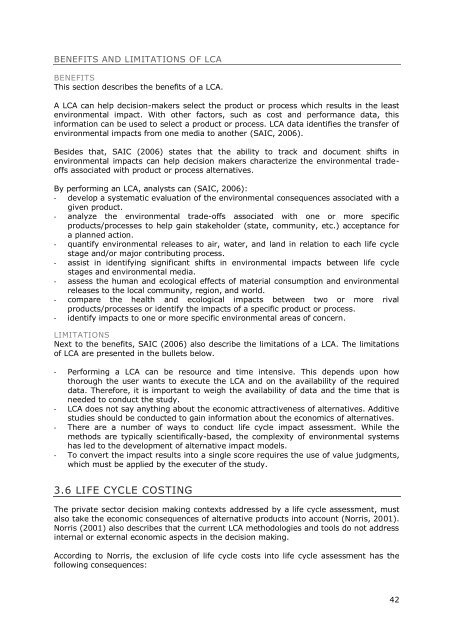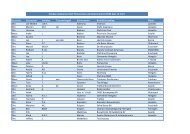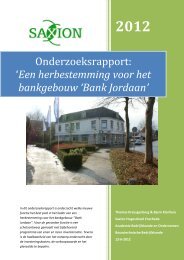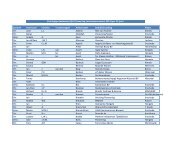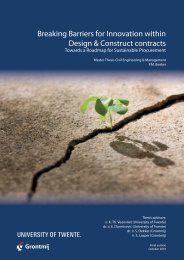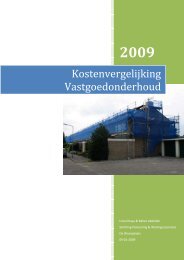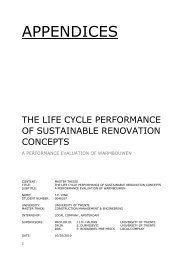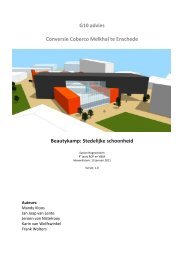the life cycle performance of sustainable renovation concepts
the life cycle performance of sustainable renovation concepts
the life cycle performance of sustainable renovation concepts
- No tags were found...
You also want an ePaper? Increase the reach of your titles
YUMPU automatically turns print PDFs into web optimized ePapers that Google loves.
BENEFITS AND LIMITATIONS OF LCABENEFITSThis section describes <strong>the</strong> benefits <strong>of</strong> a LCA.A LCA can help decision-makers select <strong>the</strong> product or process which results in <strong>the</strong> leastenvironmental impact. With o<strong>the</strong>r factors, such as cost and <strong>performance</strong> data, thisinformation can be used to select a product or process. LCA data identifies <strong>the</strong> transfer <strong>of</strong>environmental impacts from one media to ano<strong>the</strong>r (SAIC, 2006).Besides that, SAIC (2006) states that <strong>the</strong> ability to track and document shifts inenvironmental impacts can help decision makers characterize <strong>the</strong> environmental trade<strong>of</strong>fsassociated with product or process alternatives.By performing an LCA, analysts can (SAIC, 2006):- develop a systematic evaluation <strong>of</strong> <strong>the</strong> environmental consequences associated with agiven product.- analyze <strong>the</strong> environmental trade-<strong>of</strong>fs associated with one or more specificproducts/processes to help gain stakeholder (state, community, etc.) acceptance fora planned action.- quantify environmental releases to air, water, and land in relation to each <strong>life</strong> <strong>cycle</strong>stage and/or major contributing process.- assist in identifying significant shifts in environmental impacts between <strong>life</strong> <strong>cycle</strong>stages and environmental media.- assess <strong>the</strong> human and ecological effects <strong>of</strong> material consumption and environmentalreleases to <strong>the</strong> local community, region, and world.- compare <strong>the</strong> health and ecological impacts between two or more rivalproducts/processes or identify <strong>the</strong> impacts <strong>of</strong> a specific product or process.- identify impacts to one or more specific environmental areas <strong>of</strong> concern.LIMITATIONSNext to <strong>the</strong> benefits, SAIC (2006) also describe <strong>the</strong> limitations <strong>of</strong> a LCA. The limitations<strong>of</strong> LCA are presented in <strong>the</strong> bullets below.- Performing a LCA can be resource and time intensive. This depends upon howthorough <strong>the</strong> user wants to execute <strong>the</strong> LCA and on <strong>the</strong> availability <strong>of</strong> <strong>the</strong> requireddata. Therefore, it is important to weigh <strong>the</strong> availability <strong>of</strong> data and <strong>the</strong> time that isneeded to conduct <strong>the</strong> study.- LCA does not say anything about <strong>the</strong> economic attractiveness <strong>of</strong> alternatives. Additivestudies should be conducted to gain information about <strong>the</strong> economics <strong>of</strong> alternatives.- There are a number <strong>of</strong> ways to conduct <strong>life</strong> <strong>cycle</strong> impact assessment. While <strong>the</strong>methods are typically scientifically-based, <strong>the</strong> complexity <strong>of</strong> environmental systemshas led to <strong>the</strong> development <strong>of</strong> alternative impact models.- To convert <strong>the</strong> impact results into a single score requires <strong>the</strong> use <strong>of</strong> value judgments,which must be applied by <strong>the</strong> executer <strong>of</strong> <strong>the</strong> study.3.6 LIFE CYCLE COSTINGThe private sector decision making contexts addressed by a <strong>life</strong> <strong>cycle</strong> assessment, mustalso take <strong>the</strong> economic consequences <strong>of</strong> alternative products into account (Norris, 2001).Norris (2001) also describes that <strong>the</strong> current LCA methodologies and tools do not addressinternal or external economic aspects in <strong>the</strong> decision making.According to Norris, <strong>the</strong> exclusion <strong>of</strong> <strong>life</strong> <strong>cycle</strong> costs into <strong>life</strong> <strong>cycle</strong> assessment has <strong>the</strong>following consequences:42


